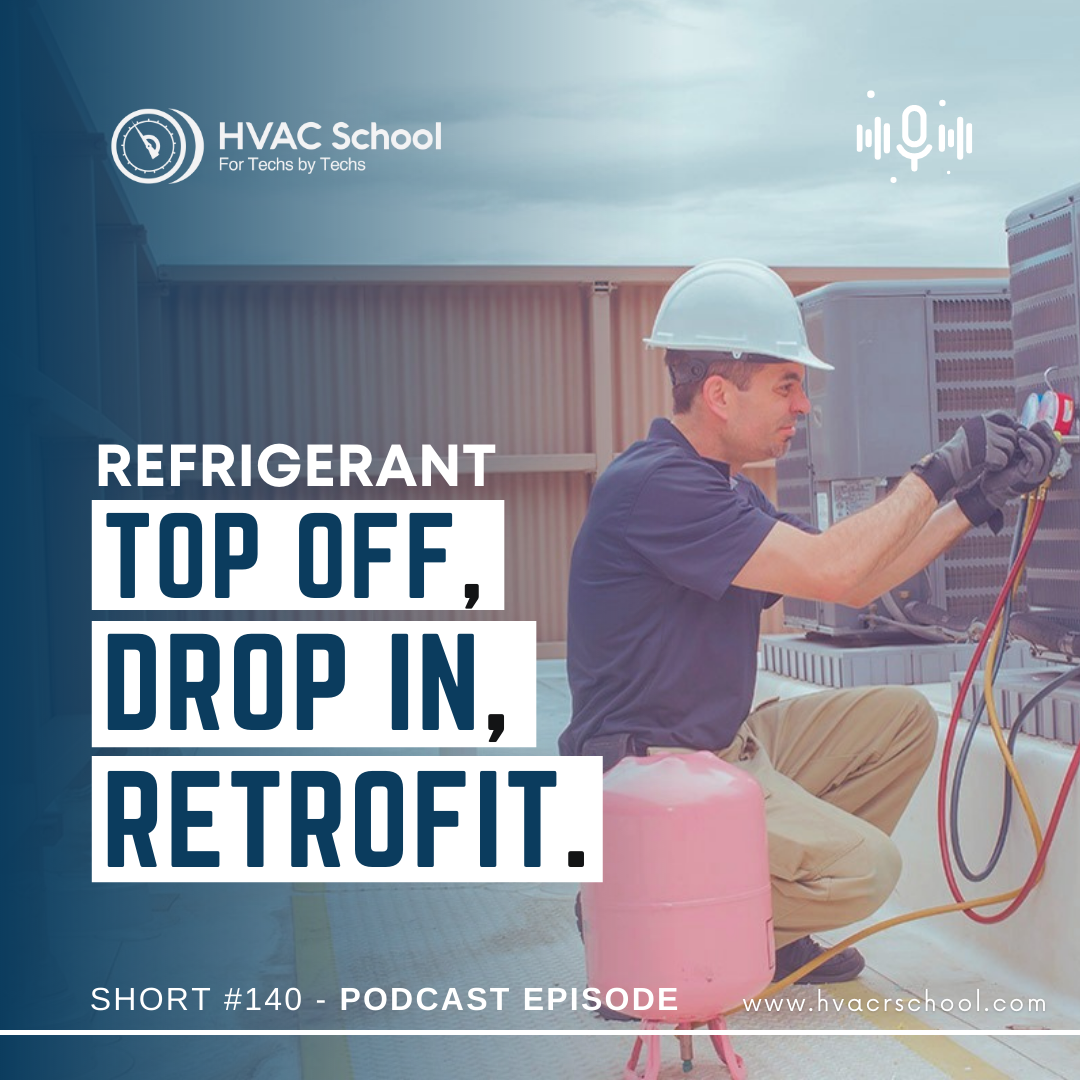Refrigerant Top off, Drop in and Retrofit – Short #140

In this short podcast, Bryan explains what it means to top off, drop in, and retrofit refrigerants. He describes the differences between those three things to dispel some of the confusion they may cause.
Topping off a system means that you add refrigerant to a low existing charge to get it back up to a normal level. In some cases, people top off systems with dissimilar refrigerants (e.g., topping off R-22 systems with cheaper R-407C). Topping off a system with a dissimilar refrigerant is unacceptable, as it’s against EPA guidelines and leaves you with an undefined refrigerant mixture. You’re only supposed to top off a system with the same refrigerant that’s already in it.
High-glide refrigerant blends can be tricky to top off when there is a leak, as one refrigerant type may leak more quickly than the other and leave you with a different chemical profile. So, you’re better off recovering and starting over when you have lost a significant amount of charge to a leak.
If you want to recharge an entire system by recovering the existing charge, you would instead be using a “drop-in” refrigerant. There are no drop-in solutions for R-410A systems. However, some commercial equipment manufacturers can offer information about drop-in solutions, though they are relatively rare, especially as oil has changed over the years. When you drop in refrigerant, you don’t have to change O-rings, Schrader cores, or other components. Drop-ins are NOT necessarily like-for-like when it comes to charging.
“Retrofit” is a relatively broad term that refers to any type of refrigerant change. The retrofitting practices that may have worked for A1 CFC systems to A1 HCFC systems will NOT work for A1 to A2L refrigerants. We need new installations for flammable refrigerant systems.
If you have an iPhone, subscribe to the podcast HERE, and if you have an Android phone, subscribe HERE.
Check out our handy calculators HERE.
Author:









Comments
To leave a comment, you need to log in.
Log In